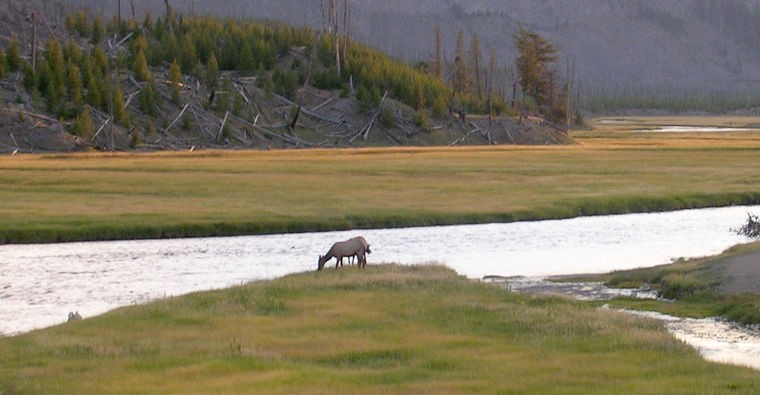With all the subspecies, elk are pretty widely distributed in various places around the world. Norway even has elk that look more like moose to Americans.
In the United States, the subspecies we are most familiar with are Roosevelt Elk, Rocky Mountain Elk, Tule Elk of California, Manitoban Elk in the Midwestern states and Canadian prairie provinces, and the now-extinct Eastern and Merriam’s Elk.
For this column, I will concentrate on Roosevelt and Rocky Mountain Elk because they are the elk that are prominent in the Rocky Mountain Northwest and the Pacific Northwest coastal states of Washington and Oregon.
Roosevelt Elk, named after President Theodore Roosevelt, inhabit the rainforests of Oregon and Washington and were introduced to Kodiak, Alaska, in the Afognak and Raspberry Islands in 1928.
They are the largest of the four surviving subspecies of elk in North America, having bigger bodies and smaller antlers than Rocky Mountain Elk.
Calling is how most hunters bag Roosevelt Elk.
There is a myth that Roosevelt Elk don’t bugle. In the congested, wet confines of the coastal range, hearing them bugle is less likely since the sound is quickly soaked up by the dense vegetation.
However, bugling will often bring Roosevelt to you. To get a shot, they must come to you.
The demeanor of Roosevelt Elk seems to be similar to white-tailed deer than Rocky Mountain Elk. Roosevelt Elk are less likely to wander than nomadic Rocky Mountain Elk, but they remain invisible, and when pressured by hunters, Roosevelt Elk tend to hunker down in the dense Pacific forests they call home.
One of the best places to see them is at the Dean’s Creek Elk Viewing Area, which is 10 miles east of Reedsport, Oregon, on Highway 38.
Rocky Mountain Elk are found in the Rocky Mountains and the adjacent ranges of Western North America. These elk have more impressive antlers than Roosevelt Elk. Rocky Mountain Elk have winter ranges that are typically in open forests and floodplain marshes in the lower elevations. In the summer, they migrate to the subalpine forests and alpine basins.
They stay higher up during warmer weather and migrate down to lower elevations in the winter. They may come down to lower grasslands during part of the day during spring and summer, but return to the higher elevations during the evening. Visitors at the Madison Campground in Yellowstone National Park are often treated to bugling elk in the meadows along the Madison River from about 5:30 to 7:30 p.m. in the summer. Sometimes we have heard them bugling after we have turned in for the night.
In Idaho, elk numbers have remained at healthy levels in most pars of the state, and the hunting forecast remains good. The Lolo Zone along the Idaho/Montana border is of some concern as the elk numbers have not rebounded as fast as hoped since the harsh winter of 1996-1997 killed most of the elk in Units 9 and 10. Idaho Fish and Game has relocated or killed a number of wolves in the area so that there is only one pack in the area in hopes of seeing the elk herd rebound to pre-1996-1997 numbers.
Calling is also an effective method of hunting Rocky Mountain Elk, but under hunting pressure, Rocky Mountain Elk, which are nomadic by nature anyway, tend to leave the area for greener and safer pastures.
Unless you have horses, plan on long steep walks and carry binoculars to scan the area being hunted. You will also need to carry a rifle capable of hitting with authority at 500 or 600 yards, but hope for a shot at 300 or 400 yards.
Smokey Merkley was raised in Idaho and has been hunting since he was 10 years old. He was a member of the faculty of Texas A&M University for 25 years. There he taught orienteering, marksmanship, self-defense, fencing, scuba diving and boxing. He was among the first DPS-certified Texas Concealed Handgun Instructors. He can be contacted at mokeydo41245@hotmail.com.



